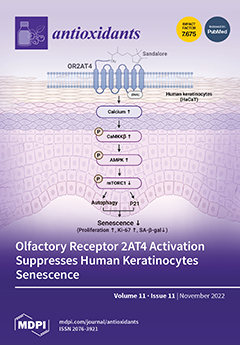A 56-day feeding trial investigated the effects of dietary histamine on the antioxidant capacity, gastric and intestinal barrier functions, and growth performance of striped catfish (
Pangasianodon hypophthalmus). Seven isonitrogenous (34.0% crude protein) and isolipidic (10.5% crude lipid) diets were formulated with
[...] Read more.
A 56-day feeding trial investigated the effects of dietary histamine on the antioxidant capacity, gastric and intestinal barrier functions, and growth performance of striped catfish (
Pangasianodon hypophthalmus). Seven isonitrogenous (34.0% crude protein) and isolipidic (10.5% crude lipid) diets were formulated with supplemental 0, 15, 30, 60, 120, 240, and 480 mg/kg of histamine, named H0, H15, H30, H60, H120, H240, and H480 group, respectively. Results showed that the weight gain rate, specific growth rate, relative intestinal length in the H240 and H480 groups, and the condition factors in the H480 group were significantly lower than those in the H0 group. Intestinal total antioxidant capacity, peroxidase, catalase, superoxide dismutase, glutathione peroxidase, and glutathione reductase activities in the H480 group were significantly lower than those in the H0 group, whereas intestinal malondialdehyde content exhibited the opposite trend. Intestinal complement 3, complement 4, immunoglobulin M, and Recombinant Mucin 2 in the H480 group were significantly lower than those in the H0 group, in contrast to intestinal lipopolysaccharide content. Intestinal
IL-10 gene expression in the H480 group was significantly lower than that in the H0 group, whereas the
TNF-α,
IL-1,
IL-6, and
IL-8 gene expression exhibited opposite results. Scanning and transmission electron microscopic observation of the gastrointestinal tract revealed severe damage to the gastric mucosa and intestinal epithelium in the H480 group. The abundance of
Treponema in the histamine groups was significantly higher than that in the H0 group. These results indicated that high dietary histamine decreases intestinal immunity and antioxidant capacity, inducing digestive tract oxidative damage and ultimately decreasing the growth of striped catfish.
Full article






